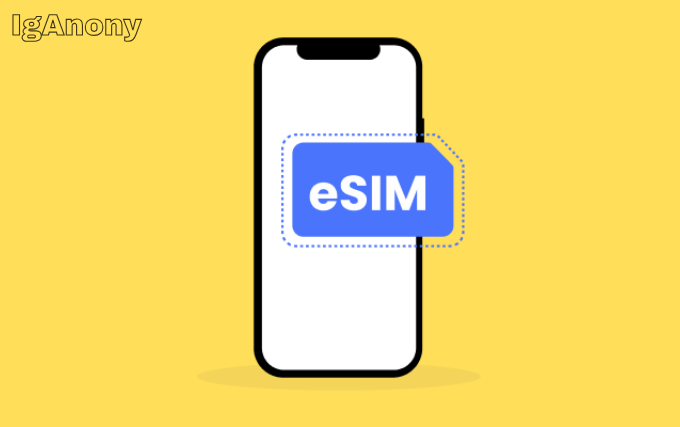The world of telecommunication is continuously evolving, and with each leap in technology, consumers are presented with more convenient and innovative ways to stay connected. One such technological advancement that is reshaping the landscape of mobile connectivity is the emergence and adoption of eSIM technology. In Australia, this innovation is gaining momentum, signalling a significant shift in how Australians choose their mobile services.
Understanding eSIM Technology
Embedded SIM (eSIM) is a global specification by the GSM Association that allows mobile users to avoid the physical SIM cards that have been standard in phones for decades. An eSIM is a digital SIM that permits users to activate a mobile network plan without the need for a traditional, tangible SIM card. eSIMs are built into the device and can be programmatically activated by various carriers, simplifying device setup and switching between service providers.
This digital framework not only benefits consumers but also opens opportunities for device manufacturers and network operators. It helps in streamlining processes, reducing manufacturing costs associated with physical SIMs, and offering flexibility that caters to the evolving demands of modern consumers.
The Advantages of eSIM for Australian Customers
The adoption of esim in Australia presents several distinct advantages for its customers. Firstly, eSIMs enhance the user experience by streamlining the setup and management of mobile services. This is particularly beneficial for people who travel frequently, allowing them to switch between carriers without the hassle of changing SIM cards.
Additionally, eSIMs support the use of multiple accounts on a single device, enabling users to manage personal and business lines or switch between data plans seamlessly. eSIM technology also makes device designs more flexible, as the space once reserved for SIM card slots can now be repurposed for other features or made smaller, contributing to sleeker, more compact device designs.
The Growth of eSIM in the Australian Market
The onset of eSIM technology is supported by a range of stakeholders within the Australian market, including network operators, smartphone manufacturers, and regulatory bodies. All are pivotal in fostering an environment where eSIM technology can thrive. Network providers have started rolling out eSIM support for smartphones, smartwatches, and other Internet of Things (IoT) devices, indicating a clear move towards a digitised mobile networking ecosystem.
Smartphones with eSIM compatibility are increasingly available in Australia, and many consumers are realising the benefits of this technology. Manufacturers and network operators alike are advocating the adoption of eSIM, often through educational campaigns and customer incentives, to accelerate the transition from traditional SIM cards.
Challenges Faced by eSIM in Australia
Despite the many advantages eSIM technology brings, its proliferation in Australia does face hurdles. One of the primary challenges is the need for awareness and understanding of eSIM among consumers who are accustomed to traditional SIM cards. Transitioning to a digital SIM requires a paradigm shift in how users think about their mobile service, which can take time to establish.
Moreover, while newer devices are generally compatible with eSIM technology, there remains a significant portion of the market using older models that are not eSIM ready. This necessitates a transitional phase where both eSIM and traditional SIMs coexist, potentially complicating network operations for service providers.
Regulatory compliance is also an area for consideration. As eSIM technology gets integrated into more devices and becomes a norm, regulations may need to be revisited to ensure consumer protection and fair competition among service providers.
eSIM and the Future of Connectivity in Australia
The future of connectivity in Australia with eSIM technology appears promising. As consumers yearn for more convenience and flexibility, eSIMs cater to this demand by providing simple activation and effortless carrier switching. Furthermore, the technology’s inherent ability to foster innovation may lead to the development of exciting new service offerings and business models within the telecommunications sector.
In the context of IoT, eSIM technology has the potential to empower a vast array of devices, from household appliances to vehicles, with cellular connectivity. This could enhance everyday objects with unparalleled communication abilities, driving the advancement of smart cities and connected living.
Looking ahead, the role of eSIM could be instrumental in facilitating the next stage of network advancements such as 5G and beyond. With faster connections and increased device interoperability, the way Australians interact with technology and each other is set to undergo a significant transformation.
Conclusion
The rise of eSIM is an evolution in mobile technology that promises to redefine the way Australians connect with the world. Through its numerous benefits and forward-looking capabilities, eSIM represents a step towards a more interconnected and mobile-first society. However, embracing this future requires overcoming present challenges and involves collective efforts from consumers, businesses, and authorities alike.
As Australia makes strides towards integrating eSIM technology into everyday life, the nation is positioned to lead by example in embracing a digitally-savvy, connected future. With the technological foundations being laid today, the groundwork for a seamlessly connected tomorrow is already underway.
In conclusion, the adoption of eSIM technology marks a notable shift in the telecommunications industry, signifying more than just a change in how SIM cards are used. It embodies an overarching move towards ease of use, consumer choice, and innovative potential — a true hallmark of technological progress. As eSIM continues to gain traction, it stands as a testament to Australia’s readiness to welcome and harness the benefits of the digital age.







